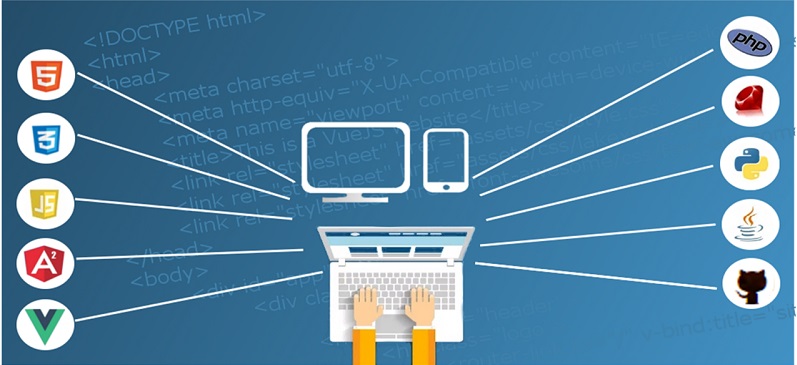
When it comes to web development, there’s a lot of talk about stacks. The technology stack is the term used to describe which tools and platforms are used to design and build a website or application. It can be confusing for businesses trying to choose the right web development technology stack for their project, so in this guide, we’ll look at key factors to consider before making a decision on what tools will work best for you.
Be Practical About Picking Your Technology Stack For Web Development.
When choosing your technology stack, it’s essential to remember what you’re hoping to achieve. You need to consider how the stack might change over time and whether or not it will be supported by developers.
You also want a web development technology stack that is scalable, secure, and flexible enough for future growth.
Even though you could use any programming language or framework independently; it’s essential to consider how they work together as part of a larger system before deciding on the right concepts for your project.
Support For Containers Is Vital For A Modern Cloud-Native Web Development Technology Stack.
The containers are the new black. They’re gaining traction among developers because of their efficiency, security, and speed and because they help top web development company move faster and innovate more quickly.
Containerization is a way of packaging software and its dependencies into a single unit that can run on any infrastructure. Containers allow you to deploy applications in a portable manner; so that they can be deployed anywhere—from your laptop’s local filesystem to Amazon Web Services or Microsoft Azure.
This makes them an ideal choice for web development technologies like NodeJS and Python, where the need for portability is paramount due to their widespread usage across multiple environments (on-premise servers, cloud platforms).
For example, let’s say you are working on an application that uses the Express web framework for NodeJS. You can use the container registry by JFrog to deploy your application to the cloud and then run it in a container. This allows you to create a portable version of your application that can be easily deployed anywhere.
Determine Which Web Development Frameworks Will Be Used.
When choosing a framework, it’s vital to consider the pros and cons of each framework. For example:
- Which frameworks will you be using? Is this knowledge already available to your team? If so, are any developers very familiar with them and eager to use them?
- Does the framework support the languages you need for your project? Do you need additional syntax for server-side scripting or client-side development (e.g., HTML5)?
- What is the learning curve like for these new technologies? Are there any situations where things might break unexpectedly if not done correctly (think security issues)?
- How long would it take someone unfamiliar with this technology stack to get up-to-speed on everything they need to start contributing effectively towards our shared goals?
- What kind(s) of training opportunities do they already have available at their disposal—can we help facilitate those as well?
The goal is to understand what it will take for the business to succeed with this technology stack and whether or not you have a team in place to help get them there.
Make Sure Your Web Application Can Scale To Meet Demand.
It’s crucial that your web application can scale across multiple servers and also be able to scale up and down quickly. A good technology stack should allow for minimal impact on users when scaling. It should not require a change in the code base to scale from one server to many servers—for example; it shouldn’t require you to write a new database query or add additional logic if your site goes from a single server to two.
Ensure That Your Web Application Is Secure And Compliant.
As you might imagine, the web app development process involves various teams and services. These include management, design and UX, content writers, developers, testers, and more. This means that it’s essential to make sure that your chosen technology stack is capable of handling your workload. And also allows for easy collaboration among all these different groups.
Look Beyond The Cost Of Acquiring The Technology Stack And Focus On The Total Cost Of Ownership.
You should also consider the total cost of ownership (TCO) and the acquisition cost. TCO is comprised of all costs related to the use and maintenance of software over its lifetime, including:
- The purchase price for the technology stack, which includes renewal fees for support and bug fixes
- Maintenance, support, and bug fixes
- Training employees on how to use the technology stack
- Scaling up or down (if you’re using AWS)
- Integrating with other technology stacks
Conclusion
When choosing a technology stack, consider the business requirements and the total cost of ownership. A cloud-native web development technology stack should support containers, have a stable future with no significant breaking changes planned within the next few years, and scale to meet demand while also being secure and compliant. I hope you like this article. Also, please share it with your friends and social media followers.

